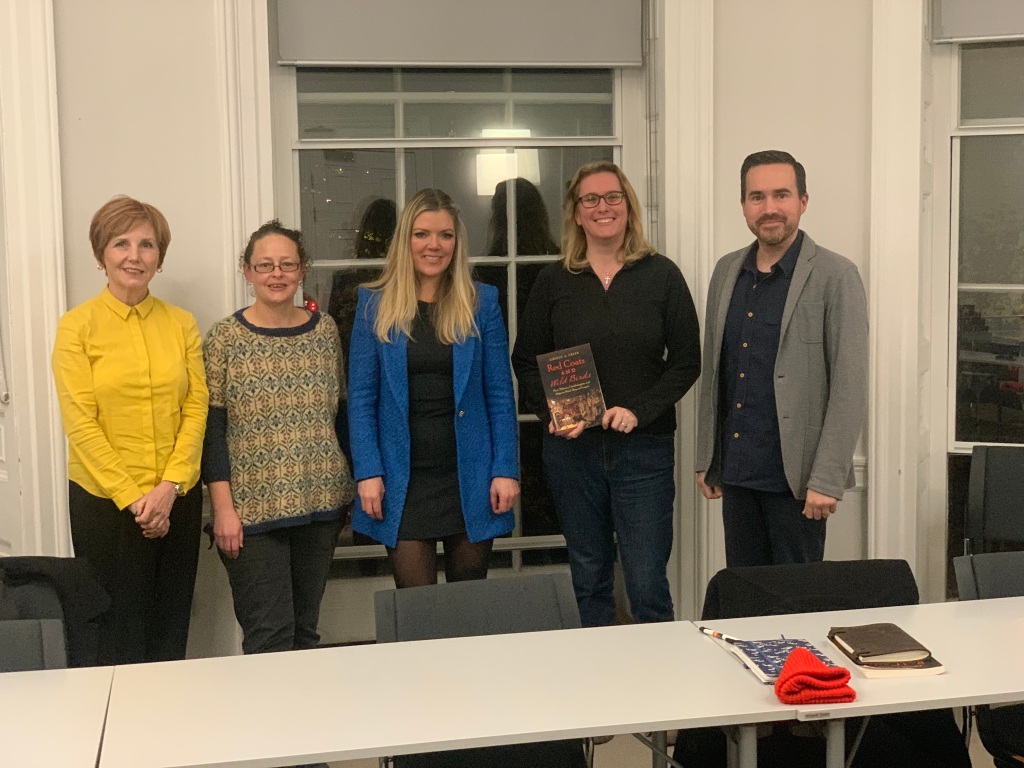On November 15th, Landscape Surgery was delighted to welcome Kirsten Greer, Canada Research Chair in Global Environmental Histories and Geographies at Nipissing University, Ontario, to discuss her monograph Red Coats and Wild Birds. How Military Ornithologists and Migrant Birds Shaped Empire (The University of North Carolina Press: Chapel Hill; 2020). Chaired by Innes Keighren, the session adopted an ‘author meets surgeons’ format, with general discussion energised by Kirsten talking through her intellectual trajectories prior and subsequent to the book, and responsive readings from Caroline Cornish (Honorary Research Associate and Humanities Research Coordinator, Royal Botanic Gardens Kew) and PhD students Christina Hourigan and Michelle Payne.

Red Coats and Wild Birds reflects on the ornithological practices of British army officers in the nineteenth-century, outlining their wider importance to cultures of nature, the accumulation of geographic knowledge, and empire building. More specifically, it focuses on the ‘British Mediterranean’ as an imperial space of connection where the mobile lives of military men and migratory birds intersected. The four substantive chapters of the book focus on specific life geographies, ‘avian vignettes’ and places: Thomas Wright Blakiston, the Great Bustard, and the Crimea; Andrew Leith Adams, the Hoopoe and Malta; Leonard Howard Lloyd Irby, the Golden Oriole and Gibraltar; and Philip Savile Grey Reid, the Osprey, and the English army home-base of Aldershot, Hampshire. The book’s Introduction and Afterword foreground questions of colonial afterlives and amnesias through reflections on twenty-first century conflicts over the hunting and conserving of migratory birds in the post-colonial context of Malta.

The discussion reflected the thoughtful, suggestive texture of the book. The combining of human and bird ‘life geographies’ was one main area of reflection; for example, Michelle noted how the visual presence of bird portraits and human migratory diagrammatic tracings inverted expected representational tropes. Shaped by our group’s, and the panel’s, investments in the plant humanities, another talking point, as raised by Christina, was how ornithological knowledge and collection might differ from the botanical. Caroline opened up discussion of the masculinities that Kirsten argues were performed through this nineteenth-century ornithology, the ‘British Military Scientific Hero’, ‘Temperate Martial Masculinity’, and ‘Muscular Adventurism’ included. We debated how the migratory geographies of birds both chimed and chafed with imperial, national and local framings. And the role of critical historical geography in countering colonial amnesia was a particularly strong conversational thread, enhanced by Kirsten’s comments on her on-going assistance to First Nation Communities in Northern Ontario.
As a PhD researcher initiating this project, Kirsten had spent six months as a ‘visiting surgeon’ at RHUL under the supervision of David Lambert, so it was a particular pleasure to welcome her back to reflect on the fascinating book that work became, and the wider commitment to critical historical geography she has developed. Fortuitously, and mirroring the session’s theme of connective mobilities, the session’s participants included Joan Schwarz, Kirsten’s erstwhile PhD co-supervisor at Queens, with us as Leverhulme Visiting Professor in 2022-23.
Philip Crang
